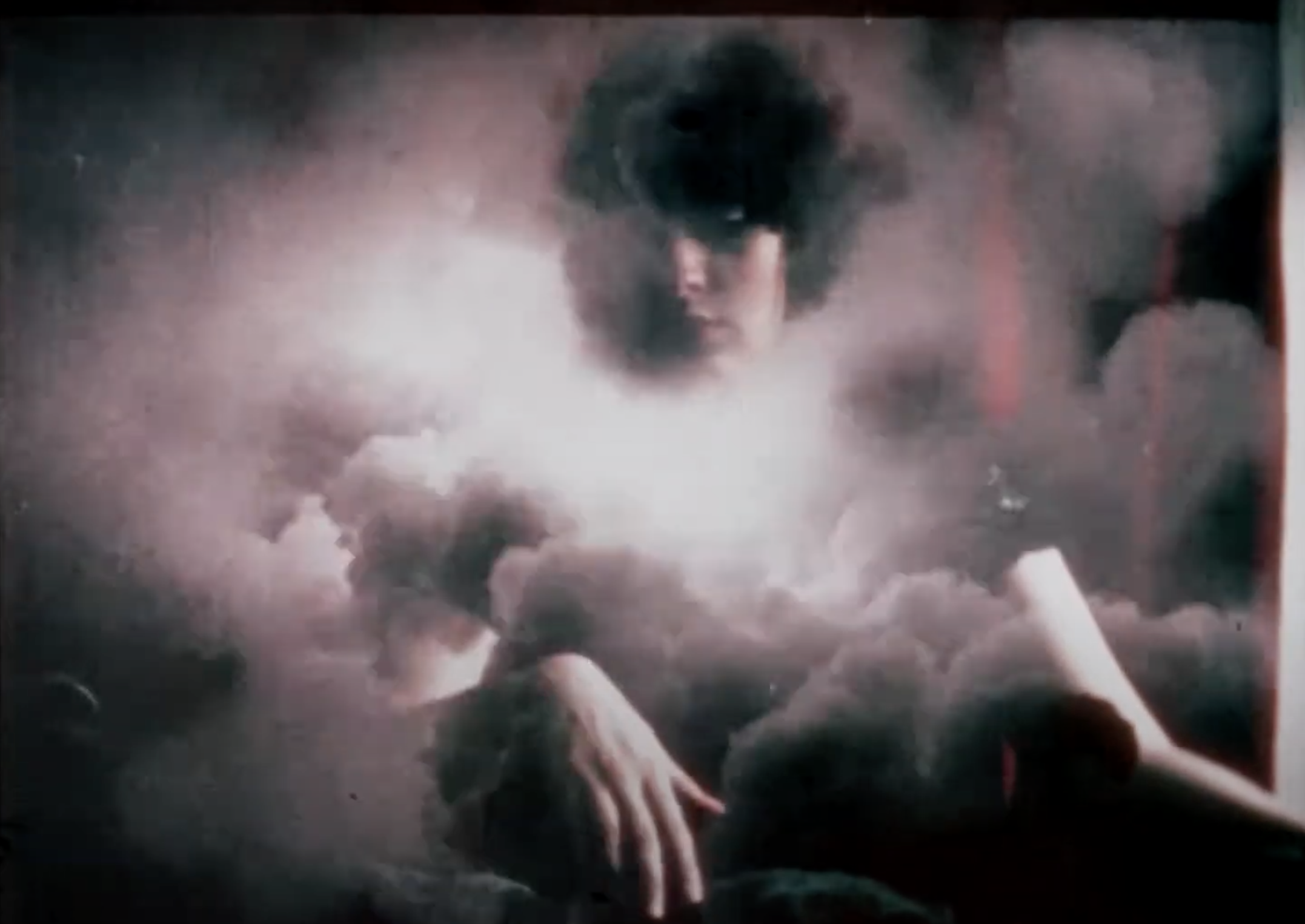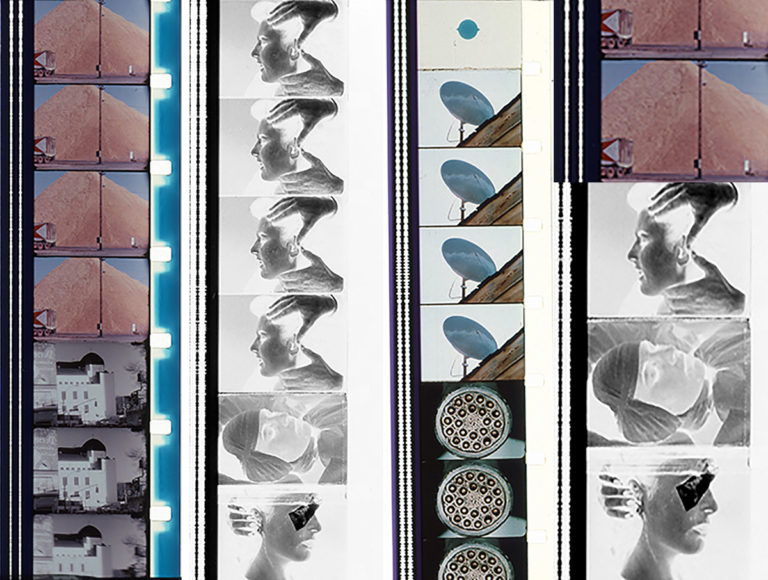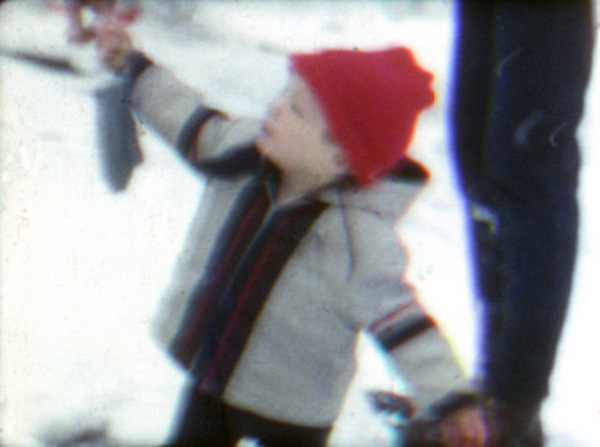
Ophelia/The Cat Lady (1969) by Tom Chomont
The Film Foundation: Preserving the Avant-Garde
Monday, September 18 at 7:30pm
4 Star Theater
2200 Clement Street
San Francisco, CA 94121
presented in association with the 4 Star Theater and the National Film Preservation Foundation
Admission: $15/12.50 Cinematheque Members
Event tickets here
This program will be introduced by Jeff Lambert, Executive Director of the National Film Preservation Foundation.
In association with Scorsese: More than a Gangster, presented at the 4 Star Theater September 2–24, San Francisco Cinematheque celebrates the work and legacy of The Film Foundation and the National Film Preservation Foundation.
Founded in 1990 by Martin Scorsese to address the urgent need for film preservation, The Film Foundation is dedicated to protecting and preserving motion picture history by supporting the preservation work of film archives and has served as a vital force in the guardianship and conservation of international film culture—in its thirty-three years of existence, the Film Foundation has contributed to the preservation of nearly 1,000 works of world cinema. In 2003, the Foundation partnered with the San Francisco-based National Film Preservation Foundation to create the Avant Garde Masters grant program, which has preserved 214 works of avant-garde cinema by 83 artists, from canonized classics to obscurities and rediscoveries. On the occasion of the 20th Anniversary of the Avant Garde Masters program, San Francisco Cinematheque celebrates this legacy with an eclectic mix of works preserved under this program. Screening will be introduced by Jeff Lambert, Executive Director of the National Film Preservation Foundation.
SCREENING: Remembrance: A Portrait Study (1967) by Edward Owens; 16mm screened as digital video, color, sound, 6 minutes, exhibition file from the Film-Makers’ Cooperative. Orange (1970) by Karen Johnson; 16mm screened as digital video, color, sound, 3 minutes. Ophelia/The Cat Lady (1969) by Tom Chomont; 16mm screened as digital video, color, sound, 3 minutes, exhibition file from the Film-Makers’ Cooperative. Prefaces (1981) by Abigail Child; 16mm screened as digital video, color, sound, 10 minutes, exhibition file from Video Data Bank. Psychosynthesis (1975) by Barbara Hammer; 16mm screened as digital video, color, sound, 8 minutes, exhibition file from Electronic Arts Intermix. FF (1986) by Julie Murray; Super-8mm screened as digital video, color, sound, 10 minutes, exhibition file from Canyon Cinema. Note to Pati (1969) by Saul Levinel; 8mm screened as digital video, color, silent, 8 minutes, exhibition file from the maker. Nocturne (1998) by Peggy Ahwesh; 16mm screened as digital video, b&w, sound, 28 minutes.
All films in this program were preserved through the National Film Preservation Foundation’s Avant-Garde Masters Grant program and The Film Foundation. Funding provided by the Hobson/Lucas Family Foundation.

Remembrance: A Portrait Study (1967) by Edward Owens
Remembrance: A Portrait Study is a filmic portrait of the artist’s mother, Mildered Owens, and her friends Irene Collins and Nettie Thomas, set to a score of ‘50s and ‘60s hit songs. Using Baroque lighting techniques, Owens captures the three women drinking and lounging one evening. (Tate Museum)

Orange (1970) by Karen Johnson
A sensual close up study of an orange as it is peeled and eaten. Shown in Edinburgh and New York Film festivals in 1969 and first prize-winner at the 1970 First International Erotic Film Festival in San Francisco. (LUX)

Ophelia/The Cat Lady (1969) by Tom Chomont
Two films. With Elizabeth Reizner and Carla Liss. The Cat Lady—backwards storms, ominous voice overs, reverse explosions all hurtle towards the quietly petting Cat Lady. (Tom Chomont)

Prefaces (1981) by Abigail Child
Prefaces is composed of wild sounds constructed along entropic lines, placed tensely beside bebop rhythms, and a resurfacing narrative cut from a dialogue with poet Hannah Weiner. Child tells us “The tracks are placed in precise and asynchronous relation to images of workers, the gestures of the marketplace, colonial Africa and abstractions, to pose questions of social force, gender relations and subordination.” (Video Data Bank)

Psychosynthesis (1975) by Barbara Hammer
The sub-personalities of me—as baby, athlete, witch and artist—are synthesized in this film of superimpositions, intensities, and color layers coming together through the powers of film. (Barbara Hammer)

FF (1986) by Julie Murray
FF is put together in such a way as to generate miniature, almost instantaneous fictions, confined and numerous, where meaning can occur between the frames as much as it might in the frame. While the movements and the pace of the film suggest relentlessness and insistent control, the assembly of images serve to illustrate a nervous breakdown of the characters represented as their actions, forced into repetitions, lose their original expression. The original condition of the found footage (damaged, scratched, etc.) and the method and process of rephotographing it are intended to be as much a vital part of the film as is the content re-represented. (FF is originally known as Fuck Face). (Julie Murray)

Note to Pati (1969) by Saul Levine
Note on snowstorms in February—March ’69. The restoration of the landscape. Begun to show friends on west coast violent beauty of this period. Childhood memories, snowball fights, sleddings, etc. and how I felt about Medford where I live kept entering into the film. The principal birds in the film are the blue jay and the crow, both beautiful, smart and ruthless. (Saul Levine)

Nocturne (1998) by Peggy Ahwesh
A psychological horror film based on fear, disquietude and the anticipation of violence …among the shadows of the night and the lurid dreams of the imagination, with no clear division between fact and hallucination, between life and death, between dread and desire. Combines plot elements culled from Italian horror films and texts from Acker, Shaviro and de Sade. Nocturne finishes a trilogy [by Ahwesh] which also includes The Deadman (1989, with Keith Sanborn) and The Color of Love (1994). Nocturne features Bradley Eros, Anne Kugler and Karen Sullivan with cinematography by Peggy Ahwesh and Robert Fenz. (Peggy Ahwesh)